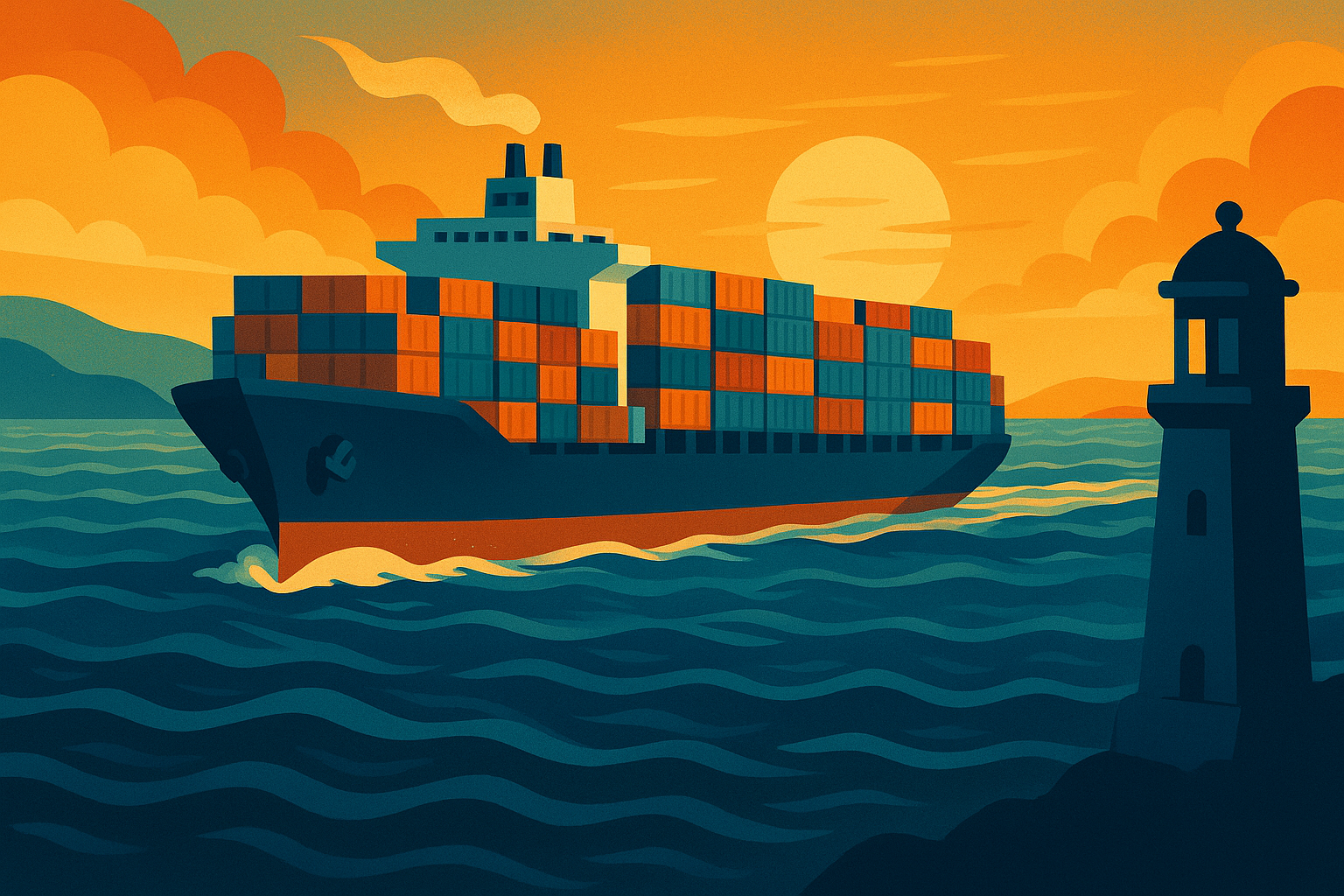This week:
- President Trump announces 30% tariff on Mexico and EU, 35% for Canada starting August 1
- US retailers rush to import merchandise ahead of the end of reciprocal tariff policy pause
- Ocean carriers cut services, add blank sailings as US import surge expected to end in August
- North American intermodal rail volumes grow in first half of 2025, but numbers down for Big Four
US to Impose 30% Tariff on Mexico Imports, 35% on Canada on Aug.1
Following last week’s announcement by White House officials that the pause on the administration’s reciprocal tariff policy will end on August 1, President Donald Trump revealed country-specific duties in a series of letters shared on Truth Social.
Starting next month, the US will impose a 30% tariff on imports from the European Union and Mexico and a 35% tariff on imports from Canada.
In other recent trade proclamations, Trump announced new tariffs on Japan, South Korea, and Brazil, along with a 50% levy on all copper imports, also effective August 1.
For the US’s North American neighbors, the announcements raised uncertainty around the United States-Mexico-Canada Agreement (USMCA). Since early March, imports from Canada and Mexico have faced a 25% tariff unless they qualify for preferential treatment under the USMCA. The letters do not clarify if this exemption will continue or if the new, higher duties will replace the existing 25% levy.
First announced on April 2, the reciprocal tariff policy aims to neutralize US trade deficits with its global partners. In his letters, Trump cited additional justifications for the tariffs. For Mexico, he highlighted security issues such as cartel activity and fentanyl trafficking. For Canada, he pointed to the country’s retaliatory tariffs on US goods and disputes over dairy imports.
According to 2024 data from the United States International Trade Commission, the US had a trade deficit of $236 billion with the EU and $172 billion with Mexico.
US Imports to Spike This Month as Retailers Rush to Beat Tariff Deadline
US imports are projected to hit their highest level in a year and a half this month as retailers rush to bring in merchandise before tariff rates go up on August 1.
According to the latest Global Port Tracker (GPT) report from the National Retail Federation (NRF) and Hackett Associates, this surge is a direct response to the deadline created by the return of the reciprocal tariff policy. The report warns this “mini rush” will be temporary, as it predicts a sharp, month-to-month drop in import volumes from August through November.
“The tariff situation remains highly fluid, and retailers are working hard to stock up for the holiday season before the various tariffs… actually take effect,” said Jonathan Gold, NRF’s vice president for supply chain and customs policy.
Gold noted that while retailers appreciated the brief delay, the “whiplash nature” of the policy has created a set of challenges. “Uncertainty over tariffs makes it increasingly difficult for retailers to plan, especially small businesses that have no capacity to absorb tariffs,” he said in the report.
The GPT forecasts July imports will reach a 2025 peak of 2.36 million TEUs. In stark contrast, volumes for August through November are projected to fall by double-digit percentages compared to the same period in 2024.
Subscribe to JMR’s Weekly Supply Chain Roundup!
Stay informed with the latest supply chain news, trends, and insights. Get it delivered directly to your inbox every week.
Ocean Carriers Cut August Sailings as US Import Boom Expected to End
Ocean container lines are significantly reducing ship capacity from Asia to the US for August. According to Journal of Commerce (JoC) Executive Editor Mark Szakonyi, this is a direct response to expected lower import demand after August 1, along with plummeting shipping rates following months of tariff-related uncertainty.
In the JoC, Szakonyi said the pullback is the latest consequence of “tariff whiplash.” Carriers had previously added capacity in May as retailers rushed to beat shifting tariff deadlines. Now, with that frontloading rush over and long-term retail forecasts looking weak, carriers are left with an oversupply of ships.
This excess capacity is causing a steep drop in container rates. According to the Shanghai Containerized Freight Index, the spot rate from Shanghai to the US West Coast was $2,089 per FEU the week of July 1, less than half the price from a month ago.
Maritime intelligence provider eeSea reports that available tonnage to the US West Coast will be cut by 6.2% in August compared to July, removing capacity for 90,000 TEUs. Capacity to the East and Gulf coasts will see a more modest 1.7% reduction, according to eeSea’s projections.
Among the planned cuts are a suspension of Mediterranean Shipping Co.’s Pearl service to Long Beach and an increase in blank sailings by other carriers.
Despite Trade Uncertainty, Intermodal Rail Volumes Grow in North America
North American intermodal rail volumes grew 3.6% in the first half of 2025, according to data from the Association of American Railroads (AAR). In an editorial published last week, JoC analyst Larry Gross said this healthy showing is even more impressive when you consider the trade uncertainty that has marked much of the North American supply chain this year.
“Despite all the trade turmoil, intermodal had a good first half of 2025,” Gross said. However, he also pointed out that the sector is “not fully immune from (this year’s) trade effects.”
“North American volume over the past four weeks was down 2% from 2024, and US volume from the ‘Big Four’ rails — BNSF, CSX, Norfolk Southern, and UP — was down a bit more at 2.9%,” Gross wrote in the JoC.
The recent slump is part of an unusual trend for 2025 that has inverted traditional shipping seasons — likely due to tariff rates going up and down. Instead of building toward a peak in the fall, rail volumes topped out in the sixth week of the year and have been declining since.
This pattern lines up with shippers’ reactions to changes in US trade policy. A significant drop in volume followed the imposition of 145% tariffs on Chinese goods in April, and a recent rebound has been linked to the pause on the US reciprocal tariff policy.






